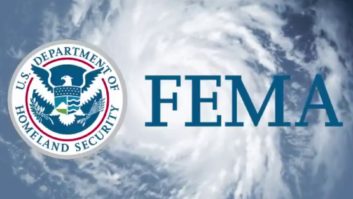What is Clear Channel’s engineering team thinking about EAS after the big test?
This conversation is with Dan Mettler, senior vice president of engineering for the Central Region of Clear Channel Radio, and part of the team coordinating the company’s EAS preparations. Clear Channel has 850 radio stations in 150 cities.
What lessons do you think the industry and regulators learned from the national EAS test?
I think we learned that our basic relay system (daisy chain) can work with some tweaks.
What was Clear Channel Radio’s technical experience specifically?What percentage of stations reported successful execution vs. problems?
Our stations/markets varied from full relay of audio with minimal audio issues, to white noise in place of the audio, to no test received at all. The results were very regional-based; this was due to what actual audio the PEP station received from the FEMA EOC in that region.
I think within the company, based on raw data that has not been truly analyzed yet, we probably were between 80 and 90 percent successful in relaying the test. Please keep in mind that is just the relaying of the test, not successful audio, as there is no way to determine how the test sounded from our EOC software on each station.
What were the typical problems?
Bad audio or completely missing audio in the test.
What did you see from your vantage point, using your EAS Watch software?
I was not specifically watching EAS Watch during the test but I can tell you we logged roughly 1,800 events into the EAS Watch software at our EOC; this number can include the EAN reception from LP1, LP2 and the actual relay of the EAN which could be three or more per call letter plus the multiple EAS headers that made it into the audio from the FEMA audio feed issues (we saw three different EAS headers).
Some industry observers have characterized the overall national test as a success, despite specific technical issues; others have been far more critical. How would you characterize it?
I would say C– to D+, as we learned that the data portion of the relay network can work, but we failed on something that we took for granted, which is the audio portion. I do not think most people would have said before the test that the biggest issues would be that the audio would not make the trip across the U.S. Most would have said that the data relay would fail and that the test would not have made it at all.
What do you think the people responsible for EAS should do next, based on what happened yesterday?
I think a short turnaround on locating and fixing what went wrong technically, and then let’s do another EAN national test in less than 90 days while this topic is still top of mind on how the first test went.
I do not want us to wait for six months or a year to test this system that is well over 15 years old. Keep in mind that we need to do another EAN National test and get the bugs worked out before we throw in the next round of possible issues with the new CAP hardware that will need to be in place and operational next year months before the anniversary of the Nov. 9 test.












